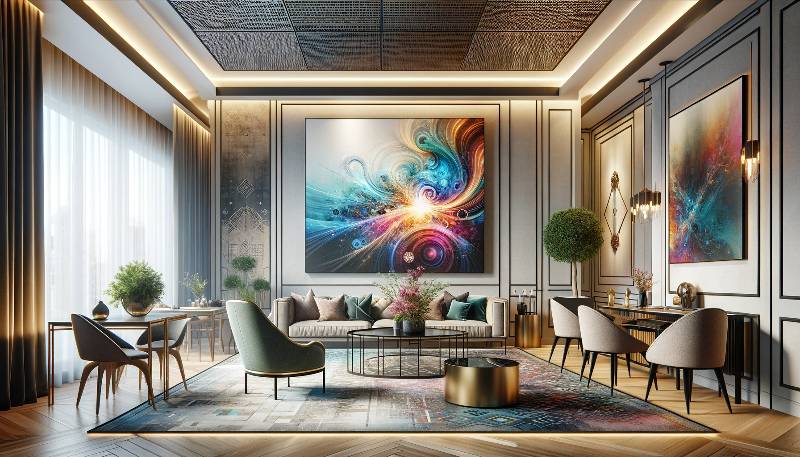Meta Description: Discover the art of blending AI-generated artwork into modern interiors, guided by the style principles of David Miller Founder of inlovewithit.com. Learn how to create harmonious, stylish spaces with the latest in art technology.
Embracing the Future: AI Art in Interior Design
Understanding AI-Generated Art
AI-generated art is a groundbreaking development in the world of creative expression, where algorithms and machine learning techniques create unique, often unpredictable artworks. This new form of art is not just about technology; it's about the unexpected fusion of data and creativity, resulting in pieces that can range from abstract expressions to hyper-realistic scenes.
The Appeal in Modern Interiors
In the context of modern interior design, AI-generated art brings a fresh, dynamic element. It's not just about the novelty; these pieces often encapsulate a contemporary aesthetic that resonates with modern design principles. They offer a blend of color, form, and texture that can complement and elevate the look of any space.
Incorporating AI Art in Your Space: A David Miller-Inspired Approach
Color Harmony and Contrast
Rita Konig, known for her impeccable use of color in Elle Deco, emphasizes the importance of color harmony in interior spaces. When integrating AI art, consider the dominant colors in the artwork and how they can complement or contrast your existing palette. AI art often features unique color combinations that can inspire a room’s entire color scheme.
Balancing Modern and Traditional Elements
My philosophy is the balance between modern and traditional elements. AI-generated art, inherently modern and cutting-edge, can be a striking contrast in a traditionally styled room, offering a contemporary twist. Alternatively, in a modern space, this art can reinforce the theme while adding depth and complexity.
Scale and Placement
The scale of the artwork is crucial. Large-scale AI art pieces can serve as a focal point in a room, while smaller pieces can be part of a gallery wall or accent areas. My approach would involve thoughtful placement to ensure the artwork complements the furniture and other elements in the room.
Framing and Presentation
The framing of AI-generated art is an opportunity to further integrate it into your interior design. Whether opting for minimalistic, modern frames or more ornate, traditional ones, the choice should align with the room’s overall style. Consider also non-traditional display methods, like digital frames or integrated screens for a more contemporary feel.
H1: The Practicalities of Displaying AI Art
H2: Lighting Considerations
Lighting plays a pivotal role in showcasing AI art. Whether it's natural light or well-placed artificial lighting, it should enhance the colors and details of the artwork. Konig’s approach would likely involve soft, ambient lighting to create a warm, inviting atmosphere around the art piece.
H2: Interacting with Technology
Given that AI art can be dynamic and changeable, especially in digital formats, consider how technology will interact with the space. This might include integrating screens seamlessly into the design or using smart lighting to adapt to the changing artwork.
H1: Conclusion: A New Frontier in Design
Integrating AI-generated art into modern interior design is more than just a trend; it's a foray into a new frontier where technology and creativity intersect. By applying principles inspired by Rita Konig, as featured in Elle Deco, one can create spaces that are not only aesthetically pleasing but also at the forefront of contemporary design and art.


